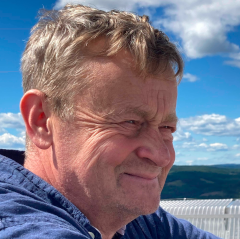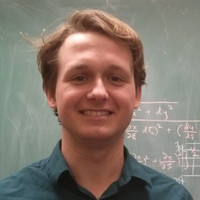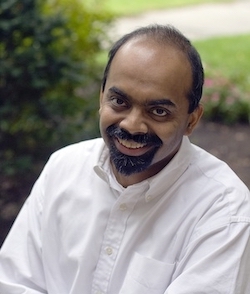Events - Page 3
This seminar will consist of two separate presentations, each about 15-minute long.
1) Magnetic Quincke Rollers with tunable single particle dynamics and collective states
2) Electrically controllable ferrofluids
We further discuss the generalization of these results to compact operators in L2, and explain how they can be used to both describe the out-performance of smooth spline approximations of solutions to differential equations when compared to classical finite element methods, and to solve the outlier-problem in isogeometric analysis.
This talk is based on work done in collaboration with Michael Floater, Carla Manni and Hendrik Speleers.
I will discuss some of our recent results on active chiral and nematic membranes. The chiral stresses we consider give rise to a novel form of odd elasticity. To outline this phenomenology I will give explicit calculations outlining spontaneous flow transitions and shape instabilities. I will discuss the relevance of these results in developmental biology and their relation to active nematics, in particular how certain limits of active nematic membranes can reduce to a theory of an isotropic membrane with an active stress defined by the deviatoric part of the shape operator.
The human brain has no lymphatic vessels, so how does the brain clear metabolic waste? In 2012, Iliff et al. proposed a theory about waste clearance of the brain, called the "glymphatic" theory. The theory suggest that the waste clearances is bio-mechanical, and that impaired clearance may be the cause of some neurodegenerative diseases and disorders. The inaccessibility of the human brain have been a hurdle in the research, as experiments on rat brains do not translate to the human brain. Researchers at Oslo university hospital Rikshospitalet have shown clearance using tracers visible in magnetic resonance images (MRI). However, the MRI only provide snapshots of different states in time, therefore computational modeling is needed to fill in the gaps. In this presentation, we will look at computational modeling with the MRI to infer material parameters in the brain.
Stalagmites grow on the floor of caves by precipitation of calcium ions found in the residual water film covering the top of the stalagmite, which is progressively drained away. Drops dripping from stalactites ensure the renewal of these ions.
Previous models of stalagmite growth assumed that drops fall on a straight vertical line from stalactites. Through high-speed imaging during field experiments in caves, we however observe that the impact point position of the drops is scattered. Using a Langevin-like equation to describe the fall of drops in response to gravity and aerodynamic forces, we then propose a prediction of the impact point dispersal. We show that measured stalagmite widths are correlated to the impact point dispersal of the drops.
In a second time, we focus on the mixing of calcium ions between the drop and the film during impact. The drop produces a crown when impacting the film, accompanied by a large amount of secondary droplet ejections. This is at the very heart of the film thickness variability post-impact. We record high-speed imaging of drop impacts on films of controlled thickness in a lab environment and assess the mixing between the drop and the film. We deduce how much liquid coming from the initial drop remains in the film.
The Kolmogorov N-width describes the best possible error one can achieve by elements of an N-dimensional linear space. Its decay has extensively been studied in Approximation Theory and for the solution of Partial Differential Equations (PDEs). Particular interest has occurred within Model Order Reduction (MOR) of parameterized PDEs e.g. by the Reduced Basis Method (RBM). While it is known that the N-width decays exponentially fast (and thus admits efficient MOR) for certain problems, there are examples of the linear transport and the wave equation, where the decay rate deteriorates to N-1/2. On the other hand, it is widely accepted that a smooth parameter dependence admits a fast decay of the N-width. However, a detailed analysis of the influence of properties of the data (such as regularity or slope) on the rate of the N-width seems to lack. In this work, we use techniques from Fourier Analysis to derive exact representations of the N-width in terms of initial and boundary conditions of the linear transport equation modeled by some function g for half-wave symmetric data. For arbitrary functions g, we derive bounds and prove that these bounds are sharp. In particular, we prove that the N-width decays as cr N(-r-1/2) for functions in the Sobolev space, g ∈ Hr. Our theoretical investigations are complemented by numerical experiments which confirm the sharpness of our bounds and give additional quantitative insigh.
We discuss discretizations and solvers for a class of numerical methods for convection diffusion equations in arbitrary spatial dimensions. Targeted applications include the Nernst-Plank equations for transport of species in a charged media. We illustrate how such exponentially fitted methods are derived. A main step in proving error estimates is showing unisolvence for the quasi-polynomial spaces of differential forms defined as weighted spaces of differential forms with polynomial coefficients. We show that the unisolvent set of functionals for such spaces on a simplex in any spatial dimension is the same as the set of such functionals used for the polynomial spaces. We are able to prove our results without the use of Stokes' Theorem, which is the standard tool in showing the unisolvence of functionals in polynomial spaces of differential forms.
This is joint work with Shuonan Wu (Beijing University)
Constructing fast solution schemes often involves deciding which errors are acceptable and which approximations can be made for the sake of computational efficiency. Herein, we consider a mixed formulation of Darcy flow in porous media and take the perspective that the physical law of mass conservation is significantly more important than the constitutive relationship, i.e. Darcy's law. From this point of view, we propose an inexact solution technique that nevertheless guarantees local mass conservation. The method is based on first solving the mass balance equation and then computing a solenoidal correction using the curl of a potential field. We extend the method to flows in fractured porous media and present numerical experiments that indicate the efficiency of the scheme.
For millennia, origami and kirigami artists have used folds and cuts to create beautiful shapes from a simple sheet of paper. I will describe our recent scientific attempts to catch up with these remarkably imaginative arts phrased as inverse problems in physical geometry that aim to control the shape and rigidity of a thin surface. Using discrete operations that vary the number, size, orientation and coordination of folds and cuts, I will show how to create piecewise isometric kirigami and origami tessellations and control their local and global morphology and mechanical response, mixing experimental, computational and theoretical approaches.
After a brief introduction to the main physical characteristics of tsunami events, the recently developed Iterative Filtering technique is presented and applied to the decomposition of tsunami signals from pressure and tide gauges. It is shown how these signals are successfully decomposed into components of different physical origins. Then, the time-frequency representation of these time series is obtained by using the IMFogram algorithm, which computes instantaneous amplitudes and frequencies for the previously obtained components. Finally, possible applications to tsunami science are discussed, such as possible applications to real time detection in early warning context.
OceanSun’s floating solar island consists of a hydro elastic membrane attached to a flexible torus, providing a more cost-efficient alternative with natural cooling of the panels leading to increased efficiency. The current research focuses on the seakeeping characteristics of OceanSun’s FSPV concept specifically. Wave induced loads are of particular interest, as the feasibility of offshore installation strongly depends on environmental loads. Important responses of the membrane based FSPV are identified by the development of a global model based on linear potential flow theory, and linearly pre-tensioned membrane motions. Based on theory formulated by Grøn (2022), a modal analysis is used to describe the vertical displacement of the membrane-floater system. A numerical implementation of the theory in WAMIT is compared to experimental results from model-scaled tests.
Finding the optimal shape is a vivid research area and has a wide range of applications, e.g., in fluid mechanics and acoustics. Moreover, there is also a close link to image registration and image segmentation. In this talk, we consider shape optimization tasks as optimal control problems that are constrained by partial differential equations. From this perspective, state-of-the-art methods can be motivated by the choice of the metric on the set of admissible shapes. Moreover, a new approach for density based topology optimization is presented in the setting of Stokes flow. It is based on classical topology optimization and phase field approaches, and introduces a different way to relax the underlying infinite-dimensional mixed integer problem. We give a theoretically founded choice of the relaxed problems and present numerical results. Moreover, in order to show the potential of the new approach, we do a comparison to a classical approach. (joint work with Michael Ulbrich and Franziska Neumann)
I will go through my PhD work at DTU. It is about the development of a fully-nonlinear finite difference based potential flow solver which imposes all of the fluid boundaries via an immersed boundary method. The convergence and stability of this approach is first established for various linear and nonlinear wave propagation problems. When it comes to the wave-body interaction problem, cautious attention is paid to the intersection point between free surface and body surface, and a scheme which meets the accuracy and stability requirements best is picked from several proposals. With the scheme introduced in this paper, piston type wave maker and forced heaving cylinder cases with high oscillation frequency have been simulated successfully.
Internal solitary waves (ISWs) are underwater waves of great amplitude moving horizontally in the layered ocean. The waves induce a velocity field which is felt both at the ocean surface, throughout the entire water column, and at the bottom. When of great amplitude, the waves induce a vortex wake in the bottom boundary layer behind the wave and transport water in the vertical direction displacing, e.g., sediments from the bottom. A fundamental mechanism in the ocean ecosystem is the vertical mixing and movement of particles, e.g., biological materials. In this talk, we present numerical simulations of ISWs of depression and of large amplitude by replicating a laboratory experiment. Furthermore, we discuss the dynamics of ISW-sediment interactions and illustrate particle movements, trajectories, and particle distribution in the water column under the influence of ISWs of large amplitude.
Why is deep learning so successful in many applications of modern AI? This question has puzzled the AI community for more than a decade, and many attribute the success of deep learning to the implicit regularization imposed by the Neural Network (NN) architectures and the gradient descent algorithm. In this talk we will investigate the implicit regularization of so-called linear NNs in the simplified setting of linear regression. Furthermore, we will show how this theory meets fundamental computational boundaries imposed by the phenomenon of generalized hardness of approximation. That is, the phenomenon where certain optimal NNs can be proven to exist, but any algorithm will fail to compute these NNs to an accuracy below a certain approximation threshold. Thus, paradoxically, there will exist deep learning methods that are provably optimal, but that can only be computed to a certain accuracy.
Vegard Antun is a postdoctoral fellow at the University of Oslo, department of Mathematics.
Ingeborg Gjerde (Simula Research Laboratory) presents joint work with Ridgway Scott (University of Chicago).
Abstract: Airflow around airplane wings is characterized by a wide range of flow scales, making it highly challenging to capture numerically. From a simulation viewpoint, the following questions are still being actively investigated: Why do airplanes fly? Can one reliably simulate the lift and drag of an airplane wing? In this talk, I will provide no good answers to these questions. Instead, I want to talk about some interesting results I've stumbled into tangentially, including:
- (Nonlinear) kinetic energy instability analysis, also referred to as Reynolds-Orr instability
- Slip boundary conditions and their connection to D'Alembert's paradox
- Stokes' paradox and its connection to weighted Sobolev spaces. I will show numerical results computed for flow around a cylinder, which serves as a proxy for flow around an airplane wing. In particular, I will talk about the impact of the friction boundary condition on the drag force and flow stability. Finally, I will comment on how these results might be interpreted in view of: New Theory of Flight, J. Hoffman, J. Jansson, C. Johnson (2016), Journal of Mathematical Fluid Mechanics.
In this talk, I will go through my past research before joining UiO, particularly at The University of Texas at Austin. This will include a brief introduction to the development of stable and adaptive finite element methods for challenging problems in engineering science. Second, I will focus on modeling efforts in coastal ocean hydrodynamics, including a review of the underlying physics and assumption and a review of the current state-of-the-art. I will also introduce several related to my focus of storm surge modeling and how the models are used by stakeholders beyond academia.
When a body (such as an offshore structure and ship) exists on the surface of the ocean, it is influenced by waves. At the same time, waves are deformed by the body. This interaction is essential for considering the problems of bodies in waves. Although these are complicated systems, the theory is well-established based on linear potential flow, and this explains these phenomena very well.
In the seminar, some applications of potential theory-based analysis are shown, including the seakeeping of a ship, multi-bodies interaction, and elastic plate in waves. In addition, the progress of the study of wave-ice interaction in a marginal ice zone is presented which is a current work in UiO.
The survival of green plants depends on the efficient use of photosynthesis in the leaves, where sunlight, water, and CO2 are transformed into sugar – the raw material, which builds up even the largest trees. The dissolved sugars are transported by osmosis through the sieve tubes of the phloem, a vascular system, which runs through the veins of the leaves and on through the stem, all the way down into the roots. The sugar production sites (mesophyll) are distributed over the entire leaf, and it is important for the functionality of the leaf that they are all able to export their sugars. For conifer needles the linear venation architecture makes this challenging, and they have an extra “transfusion tissue” that bridges between production and transport. We are currently studying this complex collection of interdigitated water -and sugar-carrying cells by micro X-ray tomography on intact needles and by network modelling, to understand the pathways for water and for sugars (running in opposite directions) with huge pressure differences (say 3 MPa) across tiny length scales (say 5 microns).
Thomas Bohr is Professor of Physics at the Physics Department of the Technical University of Denmark.
Diffusion and reactions are central to understanding life. However, studies often focus on dilute systems, while the interior of living cells is crowded with macromolecules that occupy about 20 % to 40 % of the cell volume, affecting virtually all intracellular processes [1]. In this talk, I will mainly focus on diffusion, emphasising the effects significant to crowded intracellular environments, such as polydispersity of crowders [2], macromolecular shapes, interactions [3], and softness [4]. We will also briefly discuss how reactions proceed under crowding, paying particular attention to enzymatic reactions [5] and the cooperativity of divalent binding [6].
Stephen Hladky presents work in collaboration with Margery A. Barrand (both Department of Pharmacology, University of Cambridge).
Abstract: Extravascular fluxes of marker substances and some wastes are sufficiently fast that there is almost certain to be a component of flow augmenting their diffusion in the parenchyma. There have been two major proposals for how this flow is produced and where it is important. The evidence for the classical and glymphatic hypotheses will be reviewed. Extravascular, and in particular perivascular, routes for fluid movement out of the parenchyma to lymphatics may be important in the development of hydrocephalus.
We combine a systematic approach for deriving general a posteriori
error estimates for convex minimization problems using convex duality relations with a recently derived generalized Marini formula. The resulting a posteriori error estimates are essentially constant-free and apply to a large class of variational problems including the p-Dirichlet problem, as well as degenerate minimization, obstacle and image de-noising problems.
For the p-Dirichlet problem, the a posteriori error bounds are equivalent to the classical residual type a posteriori error bounds and, hence, reliable and efficient.
José Carlos Nieto Borge is a marine physicist and associate professor at the Universidad de Alcalá de Henares, Spain.
We consider the linearized elasticity equations, discretized using multi-patch Isogeometric Analysis. To solve the resulting linear system, we choose the Dual-Primal Isogeometric Tearing and Interconnecting (IETI-DP) Method with a scaled Dirichlet preconditioner. We are interested in a convergence analysis. See more details below.
We will present the results of numerical experiments that demonstrate our theoretical findings.
The simulation of multi-phase fluids has attained growing interest in the last decades. While for single-phase flow with the Navier-Stokes system the basic model is well understood, for multi-phase systems additional challenges by the necessity to track the transition zones or interfaces between different fluid components arise.
We propose to use a phase field as a smooth indicator function to describe this situation. Using phase-field models, one introduces a small layer of mixed fluids as a so-called diffuse interface. One benefit of phase-field models is, that they can naturally deal with topology changes and can easily be extended to cope with contact line dynamics.
This model allows for discussing the optimal control problem for two-phase flow. We introduce a thermodynamically consistent phase-field model for two-phase flow including a model for contact line dynamics and introduce an energy stable numerical scheme.
This scheme allows us to investigate the time-discrete (open loop) optimal control problem, where we investigate different control actions to steer a given distribution of phases towards the desired distribution. We derive the existence of solutions to the optimal control problem and provide first-order optimality conditions.
Hybrid format via Zoom possible on demand (contact timokoch at uio.no)
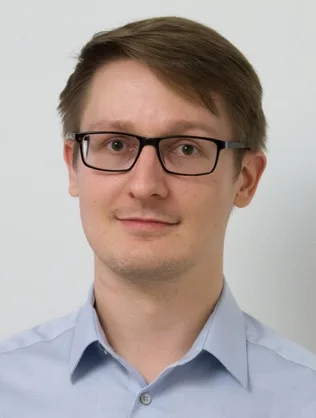
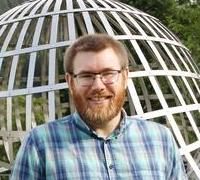



.png?alt=listing)
